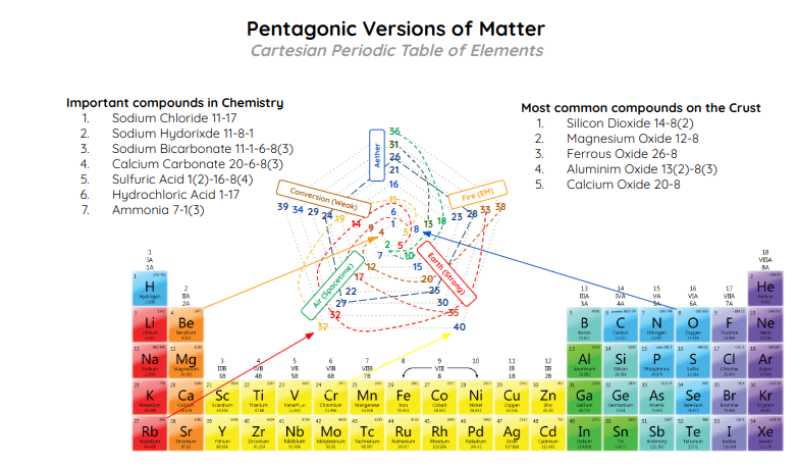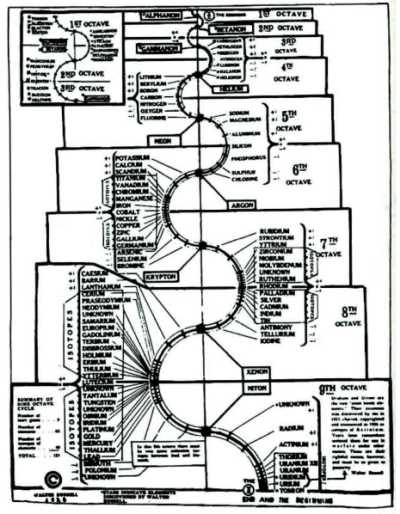The Pentagonic Versions of Elements
In Cartesian Physics, each of the elements is a mere version or modification of the aethereal substance.
Every other thing that can be attributed to body, presupposes extension [metaphysical space], and is only some mode of an extended thing [metaphysical object] just as all the properties we discover in the mind are only diverse modes of thinking.
Rene Descartes
Therefore, each element is a version or ‘mode’ of hydrogen. So instead of ’elements’, we call the unique combination of protons as versions of matter which we notate as vatomic number. For example:
| Chemistry Name | Chemistry Symbol | Material Superphysics Symbol |
|---|---|---|
| Sodium | Na | v11 |
| Chlorine | Cl | v17 |
This leads to the following naming for compounds:
| Chemistry Name | Chemistry Symbol | Material Superphysics Symbol |
|---|---|---|
| Sodium Chloride | NaCl | v11-v17 or 11-17 (eleven-seventeen) |
| Sodium Hydroxide | NaOH | v11-v8-v1 or 11-8-1 (eleven-eight-one) |
| Water | H2O | v1(2)-v8 or 1(2)-8 “one-duo-eight” |
Sodium Hydroxide 1-18-1 dissolves in water 1(2)-8 to form:
11(♀)8-1(♂)
The 5 Arms
These elements have 5 classifications called aether, air, fire, water, and earth. We connect this to the periodic table to create the Pentagonic Versions of Elements.

These start with hydrogen, incrementing alternately through the elements in a pentagon. This creates swrils, similar to a vortex, and is consistent with Cartesian vortices.
This has advantages over the Periodic Table:
- It drops arbitrary names such as Einsteinium and Californium for numerical ones like “6” for carbon, so that CO2 is 6-8(2) pronounce six-eight-duo. In this way, people just need to memorize the atomic number.
- The relationships of the compounds become more intuitive. For example, the magnetic metals form recurring rings, while the groups form spirals


The Weird Russel Table
The original version of the Periodic Table was created by Mendeleev in 1869. It had the hypothetical elements such as the ether and coronium.
Artist Walter Russel created his own table with weird elements such as alphanon, betanon, and gammanon.

Russel’s table is very arbitrary and inconsistent. However, it had a vortex arrangement which allowed us to integrate Descartes’ vortices with the material elements.
Superphysics Note
This table integrates the following principles:
- The 5 Elements
This manifests as the 5 arms which leads to the 10 major element groups. It also explains why Carbon and Oxygen are so important in our living universe.
- The 2 Forces
This manifests as the sequence of the elements or versions spreading in an opposing pattern as the pentagon expands.
The vortex pattern formed by the element-groups show the snapshot of the oversoul of the material layer in our universe.
Other universes will have different patterns.